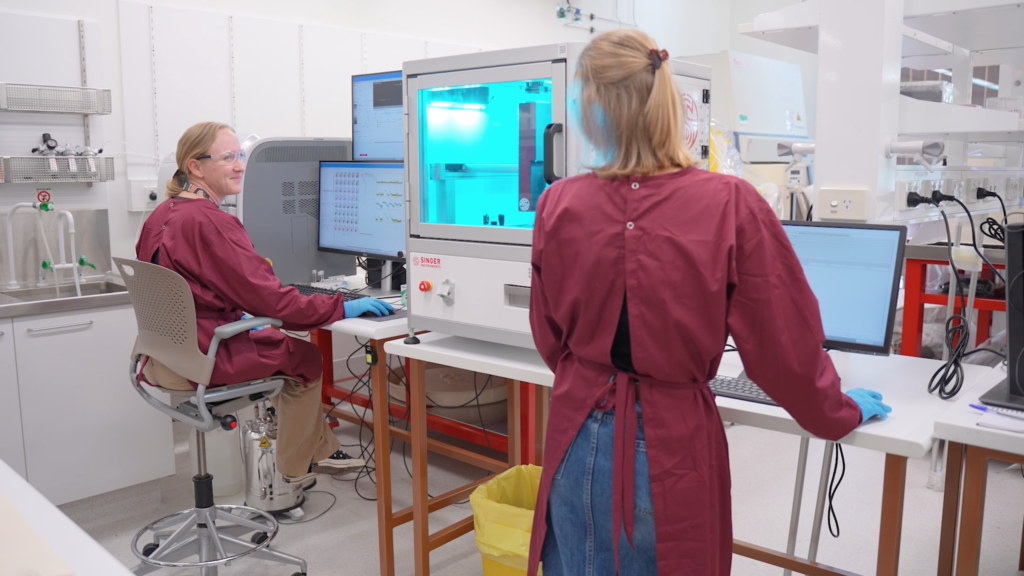Decoding the uncultivated microbiome with PIXL
Australian Human Microbiome Biobank
The Australian Human Microbiome Biobank says PIXL is “essential” to process samples quickly and capture comprehensive metadata for every microorganism in the biobank.
Robotic technologies, including Singer Instruments’ PIXL colony picker, are driving the discovery of previously uncultivatable microorganisms at the Australian Human Microbiome Biobank (AHMB), which opened its doors for sample collection in June 2024.
Early indications show that close to half (48.93%) of the 12,500 microorganisms so far banked – a mixture of gut, skin, mouth and vaginal species – have never previously been registered to any public database.
Referred to as the “dark matter” of the human microbiome, scientists believe somewhere between 60 – 80% of human microbiome species, particularly in the gut, are still unknown due to their high sensitivity to standard laboratory cultivation techniques.
The key, according to Dr Suzanne McCusker, the AHMB’s Project Manager, is to process samples very quickly, ideally starting the process within five minutes of collection:
“PIXL can pick an entire 96-well plate of colonies into new media in minutes, take photos of the plate, and take photos of each individual colony on the plate. Doing this by hand would take nearly five minutes per bacterial colony, not per plate. That’s pretty impressive.”
Working with Australian distributor BioTools, Suzanne took charge of overseeing PIXL’s installation inside an anaerobic chamber, as part of a semi-automated workcell custom-built to meet the high throughput needs of microbiome banking.
“With so many samples, and so many isolates from those samples, we needed a high-throughput way to pick the isolates. An automated colony picker, the PIXL, was essential for our microbiology research endeavours,” added Suzanne, whose team have nicknamed the robot ‘Paris’ for her impressive fluorescent lighting routine.
“Though Paris may be a diva, she is trustworthy, sturdy, and gets the job done reliably and fast,” says Suzanne.

Many of the microbiome species handled at the AHMB are oxygen and temperature sensitive, requiring samples to be processed inside an anaerobic chamber maintained at a steady 37 degrees. PIXL’s ability to pick multiple organism types, without the need for pinhead changes or wash bath cycles, make it an ideal choice for this highly controlled environment.
Diluted samples are gridded into 96 point arrays using fluorescence-activated cell sorting (FACS). After incubation, they are ready for PIXL to pick. Colony detection filters ensure accurate picking of each colony into 96-well plates containing growth media. After further incubation, and once the required optical density has been achieved, the samples are banked at -80 degrees.
Establishment of the AHMB is supported by a research grant from the Australian Government Medical Research Future Fund.
The AHMB team have further published a series of blogs exploring the lab automation behind the Australian Human Microbiome Biobank, which you can find here:
We’ll be following the work of the AHMB closely, so look out for more webinars and resources coming up soon uncovering the nuts and bolts of this exciting collaboration. Pop your details in the form if you want to be kept in the loop.